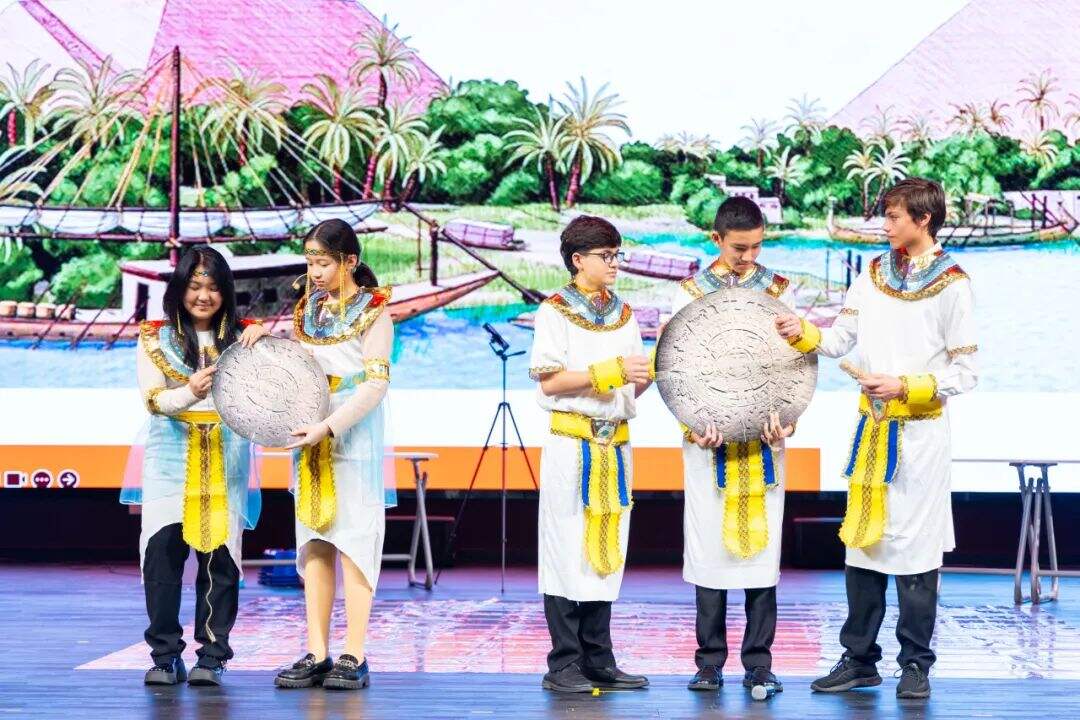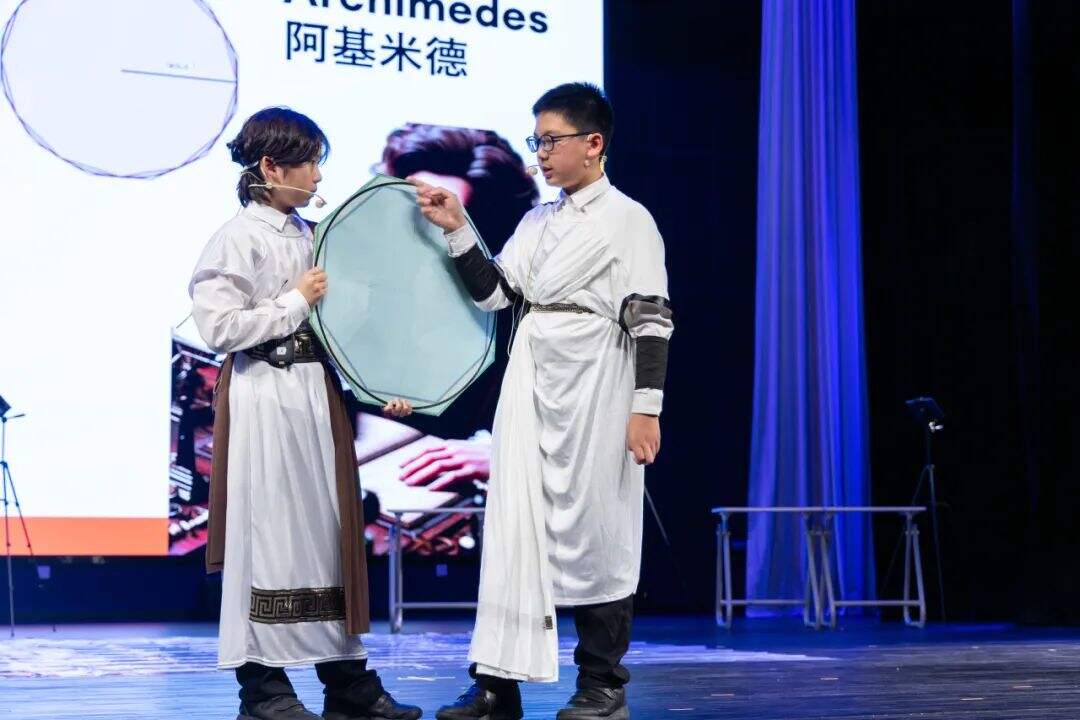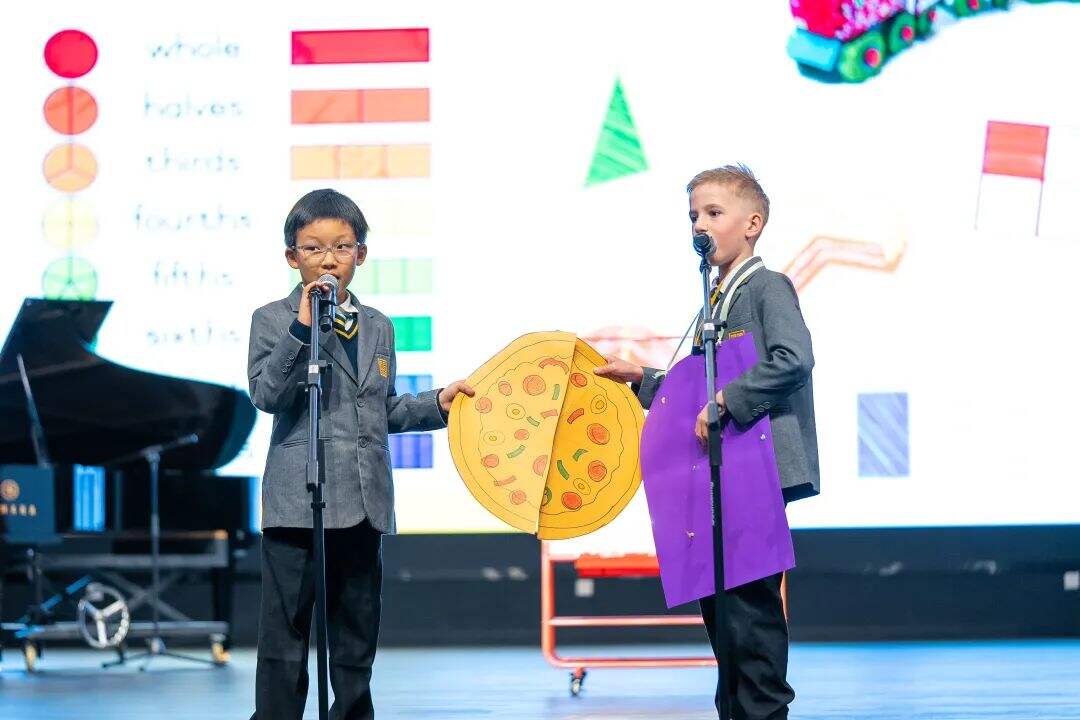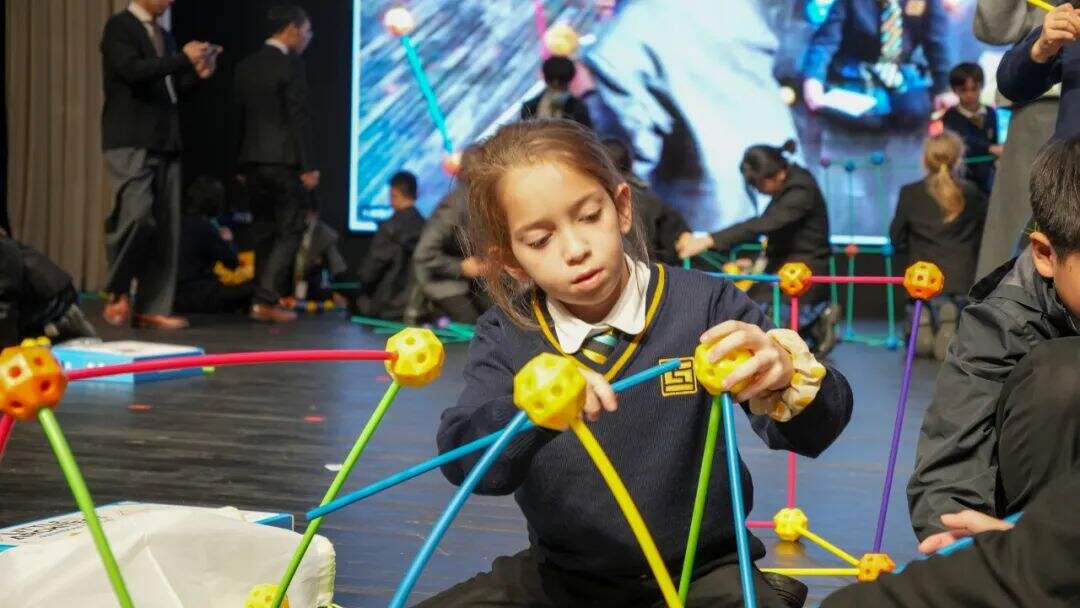

Mathematics is the universal language of patterns and quantities. At Hiba Academy Nantong, we combine the strengths of Eastern and Western education through bilingual teaching. We celebrate each pupil’s learning journey with differentiated instruction and connect mathematics to real life through interdisciplinary approaches. Here, maths is not just about formulas and theorems—it is a way for pupils to explore the world and express their ideas.
For example, when learning about pi, pupils investigate how mathematicians from different cultures and eras approached the concept. They study how ancient Egyptians measured circles, how Archimedes used polygons to approximate pi, and how Zu Chongzhi refined its value. Pupils examine Chinese mathematical texts such as the Zhou Bi Suan Jing, then rework ancient Greek proofs in English. Through this process, they gain both mathematical understanding and valuable bilingual skills, deepening their appreciation of different civilisations.


Every pupil has a unique way of thinking about math. Some excel in spatial reasoning, others in logical deduction. At Hiba Academy Nantong, we use careful differentiation so every pupil can succeed at their own pace.
In one class, pupils who need more time with geometry receive extra support through visual models to build spatial skills. Others who find abstract concepts challenging benefit from practical, real-world examples—such as using a spring scale to understand linear functions or a basketball’s arc to illustrate quadratic graphs.


How do teachers know each pupil’s needs so well? The answer is a robust, pupil-centred assessment framework. We use a combination of cognitive assessments, external exams and insights into attitudes to learning to build a full picture of each pupil.
Teachers gather evidence from class discussions, exercises, quizzes, experiments, group work, presentations, exams and results from the Progress Test in Maths. This approach allows:
Horizontal comparison—seeing where a pupil stands among their peers
Longitudinal tracking—monitoring individual progress over time
With these insights, teachers can quickly identify barriers, adapt their teaching and set challenging but achievable goals, helping every pupil reach their potential.

We believe true mathematical ability means seeing the world through a mathematical lens, thinking mathematically and applying these skills to real problems. We aim to build mathematical literacy, so pupils can use what they learn in creative ways to tackle complex challenges. To do this, we use project-based learning, breaking down barriers between subjects to show how mathematics connects with science, art and culture.
For example, in a unit on Egypt, pupils study both ancient Egyptian civilisation and the geometry of pyramids. They build models, calculate slope angles and explore the role of isosceles triangles in stable architecture. This approach makes abstract maths concrete and hands-on.
In our classrooms, Chinese and English are more than languages of instruction—they are tools for reasoning and understanding. Differentiation does not lower standards; it sets a personal growth path for every child. Interdisciplinary learning brings mathematics back to its essence as a universal language.
When pupils derive calculus theorems in Chinese and discuss real-world uses of statistics in English, when geometry helps them appreciate the Parthenon and algebra reveals economic patterns, our pupils become future innovators, equipped with strong mathematical thinking.